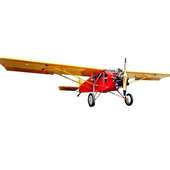- Honoring Nebraska’s Vietnam Veterans (4/3/25)
- Keeping an eye out for “Humphrey’s Executor” (4/1/25)
- Paleomagnetism and the pendulum of power (3/28/25)
- Ones, zeros, and an expensive illusion (3/27/25)
- Restructuring the Department of Ed: A familiar pattern (3/25/25)
- Balancing accountability and rehabilitation in juvenile justice (3/21/25)
- Should banks track firearm sales? (3/20/25)
Editorial
Help motorcyclists have a safe trip to Sturgis
Friday, July 31, 2015
As many as a million people are expected for the 75th anniversary Sturgis Motorcycle Rally, which officially kicks off Monday and runs through Aug. 9, but keeps the highways busy for several days on either side of the official celebration.
Last year's rally attracted about 442,000 people to the South Dakota biker mecca, but many reportedly avoid Nebraska because we require helmets, unlike Wyoming, Montana and North Dakota.
But we're already seeing plenty of luggage-laden motorcycles rolling through our area, not to mention loaded on trailers and inside "toy haulers."
Let's make sure riders have a safe trip.
The Motorcycle Safety Foundation offers some tips for other drivers sharing the road with motorcyclists:
* Because of its small size, a motorcycle can be easily hidden in a car's blind spots (door/roof pillars) or masked by objects or backgrounds outside a car (bushes, fences, bridges, etc). Take an extra moment to look for motorcycles, whether you're changing lanes or turning at intersections.
* Because of its small size, a motorcycle may look farther away than it is. It may also be difficult to judge a motorcycle's speed. When checking traffic to turn at an intersection or into (or out of) a driveway, predict a motorcycle is closer than it looks.
* Motorcyclists often slow by downshifting or merely rolling off the throttle, thus not activating the brake light. Allow more following distance, say 3 or 4 seconds. At intersections, predict a motorcyclist may slow down without visual warning.
* Motorcyclists often adjust position within a lane to be seen more easily and to minimize the effects of road debris, passing vehicles, and wind. Understand that motorcyclists adjust lane position for a purpose, not to be reckless or show off or to allow you to share the lane with them.
* Turn signals on a motorcycle usually are not self-canceling, thus some riders (especially beginners) sometimes forget to turn them off after a turn or lane change. Make sure a motorcycle's signal is for real.
* Maneuverability is one of a motorcycle's better characteristics, especially at slower speeds and with good road conditions, but don't expect a motorcyclist to always be able to dodge out of the way.
* Stopping distance for motorcycles is nearly the same as for cars, but slippery pavement makes stopping quickly difficult. Allow more following distance behind a motorcycle because you can't always stop "on a dime."
* When a motorcycle is in motion, see more than the motorcycle -- see the person under the helmet, who could be your friend, neighbor, or relative.
The MCF offers a final observation: "If a driver crashes into a motorcyclist, bicyclist, or pedestrian and causes serious injury, the driver would likely never forgive himself/herself."

